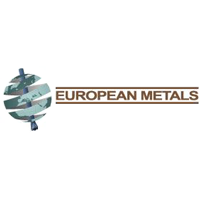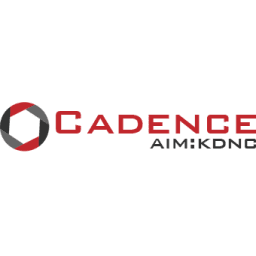European Metals Holdings Limited (ASX and AIM: EMH) has told DIrectorsTalk that it was granted a new exploration license Cinovec III.
Key Points:
* The new Cinovec III license fills the gap between the
Company's license Cinovec II and the Czech-German
border over the northern part of the Cinovec deposit,
and extends east, adjoining the Company's Cinovec II
license area.
* The aerial extent of the Cinovec III license is 6.8
km2. It covers geologically prospective area to the E
of the Cinovec deposit, with prospects of discovering
and developing additional lithium and tin ore.
* The best lithium intercept recorded in historic
drilling is 82.8m averaging 0.31% Li2O, starting at
depth of 585m.
* The potential lithium mineralization E of Cinovec is
blind; historic scout drilling identified greisenized
and lithium mineralized granite at depths of 500
meters below surface.
European Metals CEO Keith Coughlan said “We welcome the fact that the Czech government has granted us this third exploration license for which we recently applied. The license not only covers a small area above the Cinovec deposit itself along the Czech-German border, but also gives the Company exclusive rights to explore for potential deep seated lithium ore East of the Cinovec deposit. Geologic data indicate presence of mineralized granite similar to the one at Cinovec, but at deeper levels and not outcropping. The exploration target is high grade lithium and tin mineralization amenable to extraction from deeper horizons of the future Cinovec underground mine. Having this license granted means that the Company now controls 100% of the known mineralistion of the Cinovec ore body and adjacent mineralised areas.”
Introduction
The Cinovec III exploration license (6.8 km(2) ) immediately adjoins in Eastern direction the Company’s license Cinovec II. The license was granted by the Ministry of Environment in October, 2016, and is valid until 31(st) October, 2021.
(Please refer to the announcement on the European Metals Website for the graphic Figure 1 – Geomet’s exploration licenses in the Cinovec area – www.europeanmet.com.)
Geology and Historic Exploration
The area around Cinovec is underlain by a rhyolite and ignimbrite complex of the Teplice/Altenberg caldera. The volcanics were intruded by granite in two stages:
* 1st stage Preisselberg granite - barren porphyritic
biotite syenogranite
* 2nd stage Cinovec granit - highly differenced,
autometamorphic zinnwaldite-albite granite with
Li-Sn-W mineralization
Virtually all the Li-mineralisation is located in variably greisenized granite near the apical parts of the stage 2 intrusions, just below their contact with the rhyolite. Minor Sn-W mineralization penetrated the rhyolite in so called ‘zwitter’ veins. Highest grade Sn-W-Li zones are quartz vein-greisen zones in the apical part of the Cinovec intrusion.
Geophysical research in the second half of the 20(th) century indicated a subsurface granite intrusion about 2 km east of the Cinovec deposit.
In the years 1978-1985, a drilling programme with 21 scout drillholes spaced about 500 to 1000m was undertaken for an overall depth 16,487m. The drilling programme was testing subsurface distribution of various granite types and the potential for Sn and W mineralization. The programme was successful. In the Cinovec III license area, 8 out 10 drillholes intersected granite at depth of 500+ meters. In many cases the granite was not only altered into greisen but also contained significant lithium values. No appreciable Sn and W was identified.
(Please refer to the announcement on the European Metals Website for the graphic Figure 2 – Location of historic drillholes from the years 1978-1985 within the Cinovec III license. Contours show the hidden graniter body – www.europeanmet.com.)
(Please refer to the announcement on the European Metals Website for the graphic Figure 3 – Section across the Cinovec cupola and elevation beneath Predni Cinovec – www.europeanmet.com.)
The drillholes were sampled in dependence on lithological types and degree of alteration, with sampling interval of 1 m in mineralized zones. Most of the drillholes returned ore-grade Li grades, with the best lithium intercept recorded in historic drilling is 82.8m averaging 0.31% Li2O, starting at the depth of 585m. Highest grade individual samples are 0.7m@1.01% Li(2) O and 1.4m@0.94%Li(2) O.
The best lithium intercepts are shown in the Table below:
Cinovec III – best intercepts in historic drillholes
Hole From To Intercept Note
------ ------ ------ ------------------ ----------------------
4.6m@0.42% Li(2)
E-13 510.4 515 O
------
82.8m@0.31% Li(2) incl. 5.8m@0.64% Li2O
585 664.8 O (589.2-604m)
------
10m@0.23% Li(2)
711 721 O
------ ------ ------ ------------------ ----------------------
5.7m@0.57% Li(2)
E-15 596.3 602 O
------
9m@0.45% Li(2)
630 639 O
------
14.2m@0.34% Li(2)
639.8 654 O
14m@0.19% Li(2)
659 673 O
------ ------ ------ ------------------ ----------------------
3.1m@0.31% Li(2)
E-3 598.4 601.5 O
------
2m@0.3% Li(2)
604 606 O
------
13.3m@0.24% Li(2)
622.7 636 O
13.6m@0.22% Li(2)
637.9 651.5 O
------ ------ ------ ------------------ ----------------------
E-7 598.4 601.5 3.1m@0.31% Li2O
------
604 606 2m@0.30% Li2O
------
622.7 636 13.3m@0.24% Li2O
637.9 651.5 13.6m@0.22% Li2O
656 658 2m@0.26% Li2O
------
4.8m@0.29% Li(2)
E-11 608 612.8 O
------ ------ ------ ------------------ ----------------------
Cut-off 0.2% Li(2) O, max. internal waste 4m


